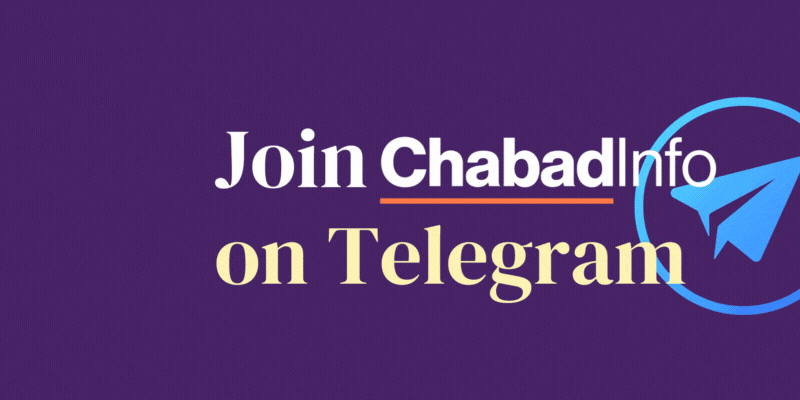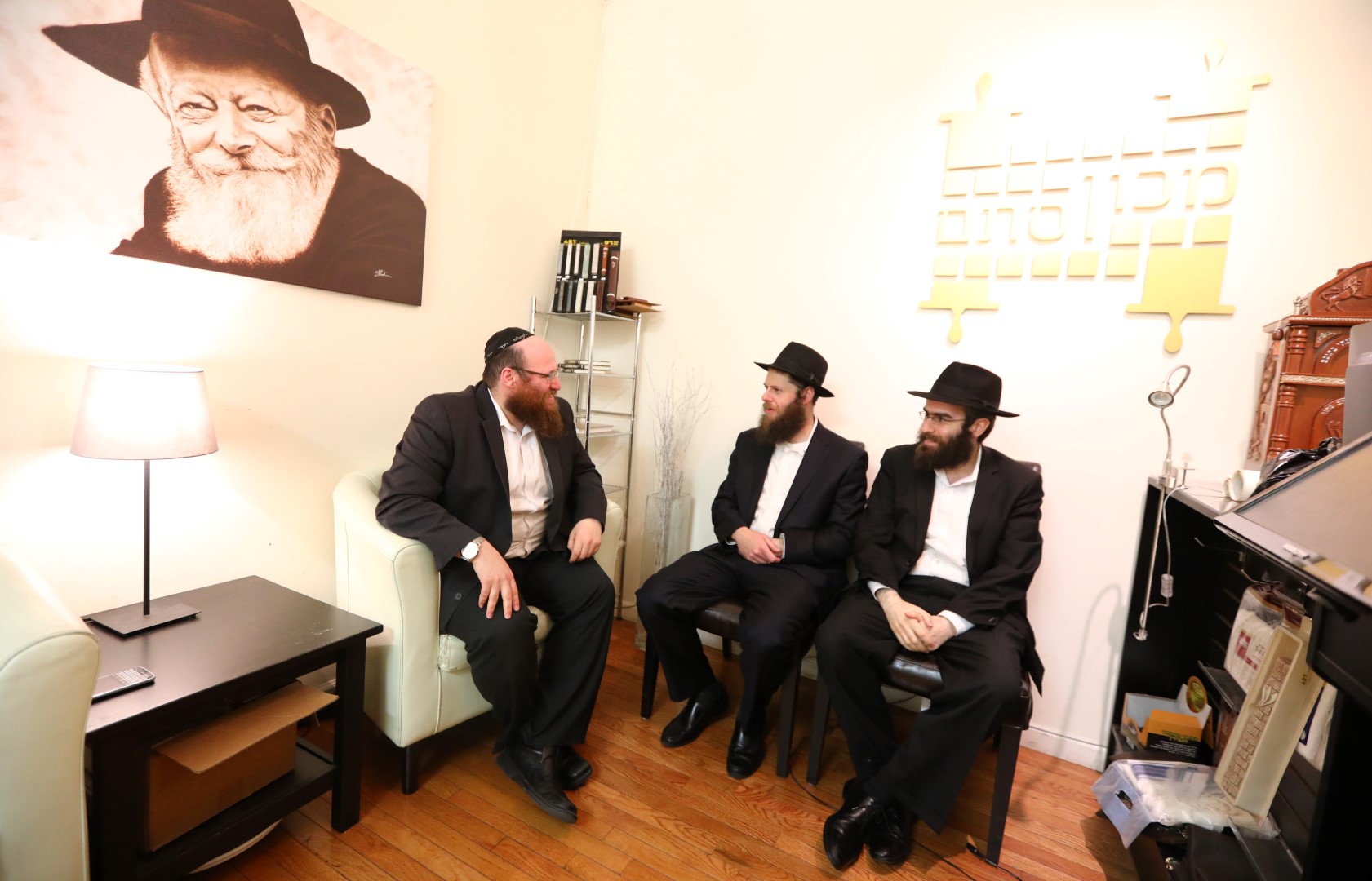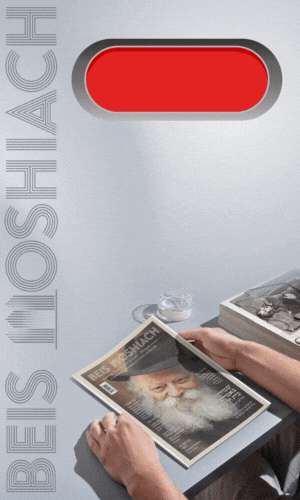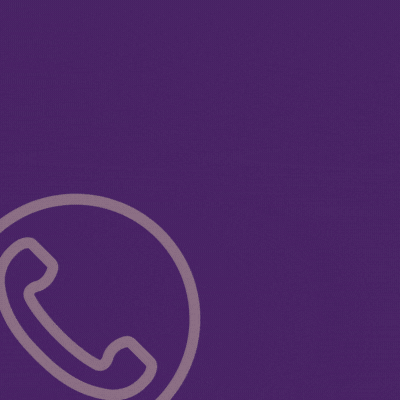Getting Moshiach Back to the Top of the Agenda
“A Moshiach shiur, is an oasis of Geula in a world still climbing out of galus. It’s like a support group for recovering galus-addicts.” • Levi Liberow interviews Rabbi Yitzchok Raskin and Rabbi Shaul Calmenson from “Learn and Bring Moshiach” • By the Beis Moshiach Magazine • Full Article
Levi Liberow, Beis Moshiach
Rabbi Shaul Calmenson was at the Ohel on a spring day two years ago and had one request.
“When you learn the Rebbe’s sichos,” he told me, “especially those from nun-aleph and nun-beis (the last year cycle of sichos we heard the Rebbe speak, highlighting the uniqueness of our era as high time for Moshiach to come), you are filled with a sense of urgency to act, to do something about the situation. Although I was sitting most of the day learning (and still am), I felt like I was being selfish. How could I sit in Gan Eden and not give back in some way to others? But for a variety of reasons, I felt stuck. I asked for a bracha to be given an opportunity to make a difference.” This was on Chof-Ches Nissan 5777.
Meanwhile, Rabbi Yitzchok Raskin was talking to friends and they came to a realization that something must be done. “It’s over 25 years since this sicha in which the Rebbe handed over to us the responsibility to bring Moshiach, and the bottom line hasn’t changed — we’re still in galus.”
“Shortly after, I was learning the sicha of Tazria Metzorah 5751 and the solution was clearly outlined before my eyes. We need to learn matters of Moshiach from the Torah. We need to have shiurim on Moshiach and Geulah!”
Yitzchok, together with Rabbi Sholom Ganzburg, began to arrange shiurim in Crown Heights. “We reached out to Rabbi Sholom Jacobson and asked him to deliver a weekly shiur at the Beis Midrash at 580 Crown Street, in the shul of the Crown Condos.”
In a matter of weeks, Crown Heights was able to boast a list of close to 10 weekly Moshiach classes, in a variety of topics and styles.
Shaul, who lives in the Crown Condos, caught onto the project in its early stages and offered to lend a hand.
“I thought this project had tremendous potential,” says Shaul. “I felt this was the Rebbe’s answer to me.”
Week after week the organization grew. Soon enough, when the organization went international, more and more shiurim were launched in cities around the world. The Learn Moshiach website has a list of close to 50 live shiurim, and more are added quite frequently. The organization is currently run by Rabbi Raskin, Rabbi Calmenson and Rabbi Eli Sobol.
A Support Group for Recovering Galus-addicts
What the Rebbe wants, simply said, is people sitting on chairs or benches learning about Moshiach, and especially in groups of 10 or more if possible.
“But the point of it all,” Yitzchok says, “is that the Rebbe wants us to ‘live’ Moshiach, that Achdus Hashem should be real to us, and should address the way we conduct our day-to-day lives and react to the situations our life presents us with.
“A Moshiach shiur, in which a group of like-minded people get together and delve into a Moshiach topic — when led by a maggid shiur who has a passion for it — is an oasis of Geula in a world still climbing out of galus. It’s like a support group for recovering galus-addicts.”
“But in today’s busy world,” Shaul comments, “coming to a shiur regularly can sometimes be tough. We wanted to make Moshiach-learning available to people on their own schedule, and at the same time offer a platform where Moshiach learning could be easily done.”
With funds raised in last year’s fundraising campaign, quality recording equipment was purchased for many of the shiurim, and now, these carefully prepared shiurim into which many hours of preparation are invested, become available to anyone, anywhere, on a user-friendly website.
After the interview, I browsed a beautifully designed and intuitively built website, LearnMoshiach.com, and had a great time just reading the titles of the classes, let alone listening in to a few.
“The censored Rambam” and “Dead or Alive?” by Rabbi Mendel Krasniansky. Or how about “Milk and Meat” by Rabbi Yossi Schmukler, and “The Status of Niddah,” by Rabbi Binyomin Kriegsman, both discussing whether these Mitzvos will continue in the future. I won’t give away the classes themselves. But I can tell you that they certainly are worth watching.
What if you don’t have half-an-hour to watch a full-length shiur?
“The short attention span of this instant generation is no secret,” Shaul smiles. “So in addition to our vast selection of full-length classes available in person and online, we started a WhatsApp and email subscription for weekly, short video clips. Baruch Hashem, we have a great video editor, Mendy Yarmove, who sifts out intriguing highlights from select classes that are viewed by hundreds of subscribers a week and thousands more via YouTube and other social media outlets.
“We also began to use our WhatsApp broadcasts to disseminate additional materials like our weekly column, and newer projects like GeulaBites and Moshiach Minute, which aim to teach the subject in a variety of exciting and unique ways.”
It could be a short Q&A, a piece of a sicha, or l’havdil a news-clipping from the New York Times, reporting about another way Moshiach can be seen in the world…
“We try to have something for everyone,” Shaul says.
The site is easy to navigate through, it’s not just a dumping ground of video lessons. You can browse by scholar (16 currently available) and by topic (a list that includes entries like Money & Moshiach, Current Events, and The Great Sanhedrin), all in an intuitively designed website.
Making Moshiach “In”
“Due to different reasons,” Yitzchok says, “Moshiach-study and activities ‘suffer,’ rightfully or not, from an image of being an outlandish thing.”
And so, the minds and hearts behind “Learn and Bring Moshiach” launched a carefully planned campaign to bring Moshiach back to the front burner, to make it an “in” thing.
Beautifully designed branded materials containing articles on Moshiach began being published weekly, and, at least to my perception, “Learn and Bring,” just by using tasteful design and applying good copywriting skills, are making Moshiach study a lot more appealing.
“In the recent fundraising campaign,” Shaul says, “a donor shared why he wants to support our work. ‘Your organization bolsters positivity and light, without the need to focus on fighting darkness, like so many others do. Your materials automatically nullify darkness without reckoning with it at all.’ That’s precisely our task — to assist others in connecting to the light of Moshiach.
“We all have, especially Shluchim, many responsibilities, but this is the task of our time. A rabbi talking from the pulpit must use that position to share Moshiach ideas, and to urge his listeners to join Moshiach classes,” says Yitzchok.
Built-In Disappointment
“We have several hundred subscribers to our website and WhatsApp group,” Yitzchok and Shaul tell me. I can add that overall, “Learn and Bring” have made a large impact and breakthrough. It certainly changed the landscape.
But there is a veiled disappointment in their words while the pair tell me of their remarkable accomplishments.
“There should be hundreds and thousands flocking to Moshiach Shiurim!” Yitzchok says. “This is the ‘the order of the day.’”
It’s not a new phenomenon. Not at all. This reminds of an anecdote I read several years back.
Rebbetzin Chaya Mushka once told a Chassid who was close to her about something the Rebbe told her. “Whenever I give out something — dollars, lekach, a sefer — there is a line until Brooklyn Avenue. Where is the line when I ask the Chassidim to do something?” the Rebbe wondered in what you would ordinarily call frustration.
If this was the lot of other mivtzoim, the urgency in learning about Moshiach has a harder time getting into our minds and hearts. It’s quite natural for us, as people born into galus, to feel it’s irrelevant.
Shaul is not looking back. “I’d love to see more involvement and more clicks and views. But our task is to do.
“You never know how far things can reach. Even if a single person is inspired from a video we put into hours long of work, it’s all worthwhile. We may find out and we may not, but we have to continue working non-stop.”
From Selfless learning to Selfish Learning
Our conversation turns into sort of a farbrengen, as we exchange ideas on how we can get even more people involved. We try to identify the source of the problem.
“When it comes to Moshiach learning, there really has to be a switch in the mind,” Yitzchok says.
Moshiach has traditionally been perceived as a futuristic idea. Not something of the here-and-now world. The Rebbe’s message is that it is here, and it is now.
The Rebbe’s advice to “get into it” and to make it something of the present is by learning about it, but the problem is that until I don’t see it as a here-and-now topic, I won’t be attracted to learning about it…
I present the question in other words:
What would you tell a Chassidishe yungerman who has kvius itim laTorah, he has set time to learn Gemara, Chassidus, and Halachah. He learns Torah to connect to Hashem, he learns Chassidus so he has a geshmak in his Avodah, and he learns Halacha to get the know-how of being a Jew. Why should he make time to learn especially about Moshiach? He’s all covered!
“As I mentioned earlier,” Yitzchok says, “one of the points of the learning about Moshiach is to ‘live with Moshiach,’ it’s a lifestyle with great benefits, even b’gashmiyus…”
But I won’t realize that until I begin to learn…
“It’s a catch-22. But here is a suggestion.” Yitzchok makes a play of words on the famous teaching of Chazal: “Mitoch lishmoh, bah l’shelo lishmah.”
“You’re a Chassid? Do it lishmah, just because the Rebbe said to! The personal gain and geshmak will come later. It’s something so important to the Rebbe and it should be the first item on the agenda of a Chabad Chassid!”
Peace Treaty
But aside for Chassidim (and for many Chassidim actually), the solution to the Moshiach catch-22 lies in making people realize the benefits of Moshiach study now. Call it “rebranding” or better marketing of Moshiach if you wish.
Shaul tells me about one of the flagship projects of L&B.
“We feel that we reached a crowd that was already looking for it, but we must reach out to everyone else,” Shaul says. “We have developed a professional, and most importantly, practical, study curriculum which focuses on living Moshiach now.”
It’s a four-part course originally prepared in Hebrew by Rabbi Mendy Elishevitz, co-founder of the Moshiach.com website and Rabbi Chaim Heber from Beer Sheva. L&B sponsored the development of the course in the original Hebrew and then went on to translate and adapt the course for an English speaking crowd.
The course is called PEACE TREATY, and its four parts (“bylaws,” as they are called in the course outline) explore four dimensions of peace that Moshiach will bring about:
Peace within oneself
Peace among one another
Peace among nations
Peace between the spiritual and material
The course (samples of the teacher’s guide are available online), complete with inspiring stories, jokes, PowerPoint presentations, source sheets in both Hebrew and English and more, guides the student through the four “bylaws” of peace, showing the true nature of the Geulah as relates to this topic, accurate to the course’s subtitle, “…how to adopt aspects of this peace into our present lives.”
“The course piloted in Crown Heights earlier this year in conjunction with Nshei Chabad and was well received,” Yitzchok says. “Many Shluchim and communities have purchased it and we keep getting good feedback and new inquiries all the time.”
The course preview and sample chapters are available at LearnMoshiach.com under the “Teaching Resources” tab. “We have made the course very affordable,” says Shaul. “The important thing is that it be taught.”
Other free teaching resources, such as prepared syllabus sheets, are also available on the site.
From Lubavitch to the World with Love — and Background Material!
The message of Moshiach is a universal one. Aside from the many activities L&B Moshiach has initiated inside the community, it makes a point to design its materials to be meaningful to other demographics as well.
“The Rebbe spoke about giving over Moshiach b’ofen hamiskabel, in a manner acceptable to everyone on his level,” Yitzchok tells me. “You can explain anything about Moshiach to anyone, even ‘tougher’ subjects, like prophecy in the present time. You just need to come prepared, well-grounded and know the sources.”
“All our maggidei shiurim are compensated for their time,” Shaul chimes in. “They are all individuals who have a koch in the matter and wouldn’t mind volunteering their time. But we pay each lecturer for this reason precisely — so he can dedicate the time necessary to prepare a subject from the bottom to the top, with its sources and explanations.”
Knowing the sources is important for us, but when we come out to the world it’s especially important. Many times, concepts of Moshiach that are natural to us, are tremendous chiddushim to people out there.
It appears as though this investment is worthwhile.
Earlier this year, L&B Moshiach launched an ad campaign that targeted over 15 leading, frum news websites, which garnered thousands of clicks and a nice number of subscribers.
I had a look at the article posted on one website which described the work of L&B Moshiach. In the comment section, a well-meaning Jew posted these kind words:
“A bunch of babble. The Rambam states that there is no point in studying about the Geula, just be anxious for it.”
Shaul replied by quoting portions of an article previously posted on LearnMoshiach.com:
“Glad to see you raise this question on the Rambam. The Rambam seems to imply that we should only work on our Emunah and anticipation and not so much with the study of Moshiach. Why, if so are we stressing the studying about Moshiach, you ask?
“In truth, our main intent at L&B Moshiach is not that our viewers become masters and determine the order of events or the precise time of the Geulah, rather, to empower our viewers to genuinely await his coming.
“Waiting for Moshiach and anticipating his coming, is not simply a virtue but rather a religious obligation. Is it possible for us to await something we do not understand? Is it possible for us to yearn for something from which we feel disconnected?
“A mashal is given about the poor village boy who is not capable of even entertaining the thought and desire of marrying the king’s daughter because it’s entirely out of his league. By learning about Moshiach we become capable of ‘awaiting the coming of Moshiach;’ we begin to process and internalize the concept of an era when the truths of the Torah and Hashem will be as self-evident as the laws of gravity and mathematics.
“Unfortunately, due to the long duration of this bitter and dark galus, many fall weak in their belief and longing for the Geula, while others feel just fine remaining in their comfortable lives they are accustomed to and don’t bother to long at all. We have become the poor village boy incapable of fathoming or concerning ourselves with the awesome reunion we will have with our King upon the advent of the final Geula. This is a very real challenge that exists in our generation.
“The good news is that by learning about the subject, we can always rekindle our hope and anticipation for the Geula, because learning opens up our minds and hearts to appreciating what Geula is all about and what we are missing without it. Then we can truly start to yearn for it.”
There’s a lot of missing information on Moshiach out there, and L&B is trying to fill the gap.
Money Needed to Make Money Grow on Trees
When you subscribe to the website or the WhatsApp group (see number below), you get to your inbox a lot of captivating, thought-provoking materials about Moshiach.
But by far, the best productions that L&B Moshiach has made were the animated videos. One I saw shortly after it was released. It takes a very famous Moshiach fact — that candies will grow on the trees — and gives it a whole new dimension. If you haven’t seen it, look for it on the website. I highly recommend it.
A second one has since been produced, which I would give an even better mark. Check it out.
Why only two animated videos?
Shaul tells me he hears this question again and again. “Those videos are our most popular productions, and the most expensive to make…” he says.
There are many more such videos planned, and many other projects waiting to be moved along, but funding is needed. L&B Moshiach recently made a campaign to raise $28K to continue and expand their activities. Despite current operating costs of over 50,000 a year, even this very modest goal has yet to be reached.
Are we doing what we can to bring Moshiach? Or at least helping those who are?
*
The magazine can be obtained in stores around Crown Heights. To purchase a subscription, please go to: bmoshiach.org
350
Join ChabadInfo's News Roundup and alerts for the HOTTEST Chabad news and updates!












































